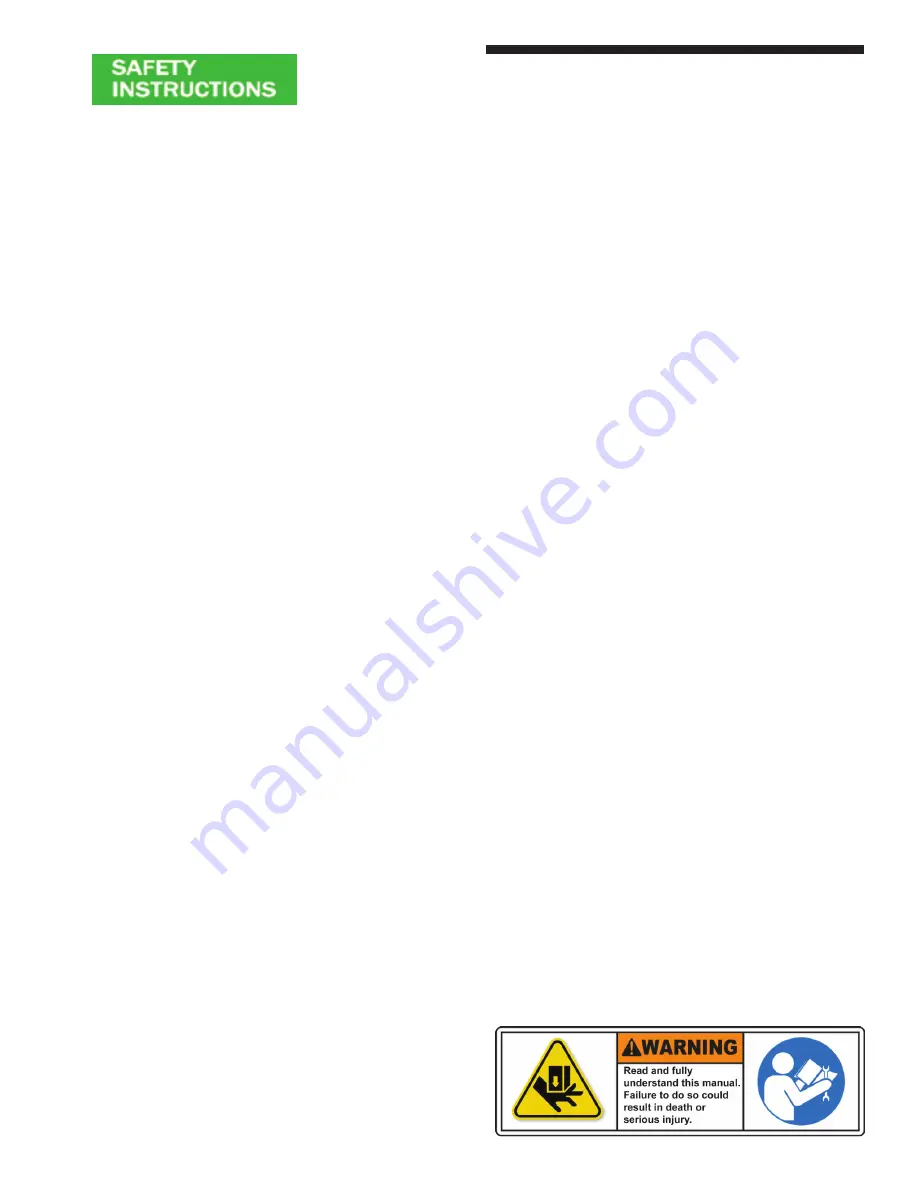
B-2
Appendix “B”
Regulations and Guidelines
“...control circuits shall incorporate features to minimize
the possibility of an unintended stroke in the event of
the failure of the control component to function properly,
including relays, limit switches, and static output circuits”
(ANSI B11.1-2009).
“...control system shall be constructed so that a failure
within the system does not prevent the normal stopping
action from being applied to the press when required,
but does prevent initiation of a successive stroke until
the failure is corrected” (ANSI B11.1-2009).
“...the control system shall be constructed so that a
failure within the system does not prevent the normal
stopping action from being applied to the press when
required, but does prevent initiation of a successive
stroke until the failure is corrected” (OSHA CFR
1910.217).
Safety Guidelines for Management
Operational Safety
1. Appoint a Safety Coordinator to be responsible for
safety regulations, requirements, and suggestions.
He must review and investigate all accidents and
“close calls.”
2. Establish and issue safety rules. Inform each
employee of his responsibilities. Make sure he
understands them and knows what is expected
of him.
3. A thorough review and an early inspection must
be made of existing presses, dies, and point
of operation guarding to attain the degree of
responsibility required by ANSI B11.1-2009 Safety
Standards and Federal State laws. Review what
mandatory modifications are necessary.
4. Equipment that is no longer safe and that cannot
be economically upgraded should be destroyed.
5. Never allow persons legally under age to operate
or assist in the operation of machinery.
6. All personnel must be properly trained to eliminate
accidents and injuries.
7. Regardless of the operator’s experience, education,
or language barrier, it is the responsibility of the
supervisor to give him a thorough explanation with
each new job assignment.
8. No employee should be given a work assignment
that he does not fully understand. Only properly
instructed and thoroughly trained personnel
should be assigned to work on or with any
machine.
9. It shall be the responsibility of the employer to
provide an adequate, clean, safe, and uncluttered
work area around each machine.
10. If a malfunction is reported, stop the machine
immediately, correct the problem, then resume
production.
11. Investigate all accidents and close calls.
Analyze the reason for occurrence. Take action
to prevent recurrence. Keep records of the
investigation and preventative steps that were
taken.
12. Only employees who understand the machines,
operation and safety requirements, and who are
able to communicate this knowledge should be
given the responsibility of instructing and training
others to perform as operators.
13. Management must decide that personnel
protective safety equipment is required to
perform each job safely. Items such as safety
glasses, shoes, gloves, helmets, hand pads,
spats, protective sleeves and material handling
equipment are common in the metal working
industry. If noise levels are excessive, protective
headsets and earmuffs are recommended.
14. When designing point of operation guarding,
the manufacturing process should be weighed
heavily in favor of operational safety.
15. Establish safe and convenient material handling
methods and procedures.
16. Post in convenient areas the names, addresses,
and phone numbers of physicians and hospitals,
and members of the organization who are to be
called in case of emergency.
17. All equipment must be electrically connected
according to the National Electric Code and be
consistent with other accepted practices.
18. Provide adequate and proper fire protection
equipment.
Содержание microguard
Страница 1: ...Installation Manual for the Metal Box Controller Module ...
Страница 45: ...NOTES ...
Страница 46: ...NOTES ...
























